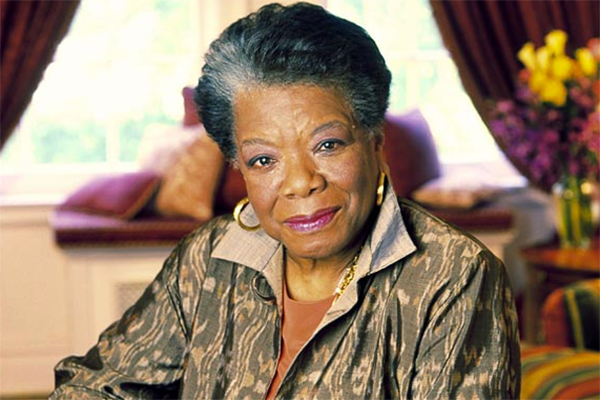“The Tale of Custard the Dragon” is said to be Ogden Nash’s most famous poem for children. It was published in 1936 as part of his collection of poetry entitled The Bad Parents’ Garden of Verse. A few years later, a picture book of the poem was published with illustrations by the famous Lynn N. Munsinger. Read The Tale of Custard the Dragon detailed analysis and more here.
The Tale of Custard the Dragon Analysis by Ogden Nash
Nash is well known for his children’s poetry, and “The Tale of Custard the Dragon” is one such poem. It is like a fairy tale, in fact. The story itself is very simple, as fairy tales generally are. But its moral is an important one – that we must never judge anyone without getting to know them well. As many scholars have said, fairy tales are used as a vehicle for teaching children how to survive in this world. That is why, in fairy tales, the little girl is told never to venture into the forest alone, and when she does, she faces such heinous characters as the big, bad wolf. In Nash’s poem, we find fantastical creatures like the dragon, as well as everyday creatures like the cat, the dog and the mouse.
All these characters are personified. In the story, Belinda and her smaller pets are very courageous. This is an admirable quality, of course, but when the time comes to deal with an actual danger such as the pirate, their courage is all but lost. The generally meek and cowardly dragon named Custard is the one who saves the day. Even though his longing for a safe cage has been mocked all through the poem, the moment that Custard sees the pirate, he sheds all his cowardice and gobbles the pirate up at one go. In the end, Custard emerges as a braveheart.
On the other hand, the pirate who had been full of bravado crumbles upon seeing Custard charge at him. Hence, both Custard and the pirate are not what they seem. This is the lesson that Nash is trying to teach – not to judge any book by its cover. At some point or the other, the true colours of any person will shine through, whether those colours are good or bad. He uses the vehicle of a fanciful tale to teach this lesson.
Poetic Devices in The Tale of Custard the Dragon :
Rhyme scheme:
Each of the 14 stanzas in “The Tale of Custard the Dragon” follows the same simple rhyme scheme – AABB. That is to say, each stanza is actually composed of a pair of rhymed couplets.
Rhetorical devices:
Oxymoron: In this rhetorical device, contradictory terms appear in conjunction. In this poem, the poet uses the device of oxymoron when he writes the phrase “pet dragon”. We all know that dragons are dangerous creatures, and therefore, we find it hard to believe that they can be domesticated and kept as pets.
Simile: This rhetorical device is used when an overt comparison is made between two different things. In this poem, the poet uses the device of simile in the 3rd line of the 2nd stanza when he compares Belinda’s dog with mustard, saying that both are sharp, and also uses the word “as” while making the comparison. The poet also uses this device in the 3rd line of the 3rd stanza when he compares the dragon’s mouth with a fireplace, and also uses the word “like” while making this comparison. In the 4th stanza, similarly, the poet compares Belinda with a barrel of bears, and her dog with a tiger. In the 10th stanza, the dragon is compares with an engine and a robin, and the sound of its tail with that of irons in a dungeon.
Metaphor: This rhetorical device is used when a covert comparison is made between two different things or ideas. In this poem, the poet uses the device of metaphor in the 3rd line of the 3rd stanza when he compares the dragon’s nose with a chimney.
Personification: This rhetorical device is used to bestow human qualities on something that is not human. In this poem, the poet uses the device of personification with respect to Belinda’s kitten, mouse, and dog. In the 2nd line of the 5th stanza, he gives them all the human ability to speak to and tease another being. They are seen teasing the dragon.
Onomatopoeia: This rhetorical device is used when a word is used to describe a sound. In this poem, the poet uses the device of onomatopoeia in the 2nd line of the 6th stanza, where he uses the word “week” to describe the sound a mouse makes while giggling.
Compound Words: Compound words are formed by adding two words into a single one, when normally those words are not used together. In this poem, the poet uses the device of compound word in the 3rd line of the 7tth stanza when he combines the words “meow” and “ouch” to create the word “meowch”.
Transferred epithet: This rhetorical device is used when an emotion is attributed to a non-living thing after being displaced from a person, most often the poet himself or herself. In this poem, the poet uses the device of transferred epithet in the 2nd line of the 9th stanza when he writes the phrase “terrified yelp”. It is not the yelping sound that is terrified, for it is not a living thing, but that the dog is terrified by the pirate and yelps in reaction.
Central Idea of The Tale of Custard the Dragon :
Belinda and her pets live peacefully in a little white house. These pets are a cat named Ink, a mouse named Blink, a dog named Mustard and a dragon named Custard. Among them all, Custard is the most cowardly and is also often mocked for the same. Then one day, a pirate breaks into Belinda’s house. Everyone is scared, but Custard charges towards the pirate and gobbles him up. Everyone is proud of Custard and their life goes back to normal after this incident.
Themes of The Tale of Custard the Dragon :
Do not judge a book by its cover: Custard is always mocked for being cowardly, whereas the others are quite brave. However, when a pirate breaks into Belinda’s house, she and Ink and Blink and Mustard are all very frightened. It is Custard who charges at the pirate and eats him alive all at once. The one who had seemed to be the biggest coward is the one who saves the day in the end. On the other hand, the pirate had been full of bravado when he was entering the house, but he loses all of that as soon as he sees Custard approaching him. He can only stare at Custard and have a drink to prepare himself for the unavoidable fate of being gobbled up. Thus, neither Custard nor the pirate are what they seem to be. Therefore, we should never judge someone without fully getting to know them. When the situation demands it, they are bound to show their true colours and these may surprise us.
Childish vocabulary: Since Nash’s primary audience for this poem is children, he has also modified his vocabulary to make it likeable to children. Children often mispronounce words, and that is what Nash does here when he uses the words “realio” and “trulio” to mean “real” and “true”. Even the names for Belinda’s pets are bound to make children laugh. Nash imagines what kinds of sounds animals might make in their different moods, and says that a mouse would say “week” when it is giggling and a cat would say “meowch” when it is scared. He also makes these animals dance when they are happy. It is for these reasons that children love reading Nash’s poems.
Tone of The Tale of Custard the Dragon :
The tone of this poem is humorous for the most part. A tone of suspense comes in when the pirate enters Belinda’s house, but that is soon replaced by joy when Custard saves the day. It could be argued that the thought of a man being eaten alive is quite scary and inappropriate for children, but the way in which Nash tells us the story is bound to make us laugh.
Conclusion:
“The Tale of Custard the Dragon” is one of the best-loved children’s poems by Ogden Nash. It story is delightful, its vocabulary humorous and its characters loveable. Its message is also one that children are likely to remember and apply in real life. Hence we can easily say that Nash has been successful in his purpose of writing this fanciful tale. Read more: The Tale of Custard the Dragon Summary by Ogden Nash
Keywords: The Tale of Custard the Dragon analysis, The Tale of Custard the Dragon themes, poetic devices in The Tale of Custard the Dragon, The Tale of Custard the Dragon critical appreciation, The Tale of Custard the Dragon central idea
Some online learning platforms provide certifications, while others are designed to simply grow your skills in your personal and professional life. Including Masterclass and Coursera, here are our recommendations for the best online learning platforms you can sign up for today.
The 7 Best Online Learning Platforms of 2022
- Best Overall: Coursera
- Best for Niche Topics: Udemy
- Best for Creative Fields: Skillshare
- Best for Celebrity Lessons: MasterClass
- Best for STEM: EdX
- Best for Career Building: Udacity
- Best for Data Learning: Pluralsight
















Thanks … Very Helpful …